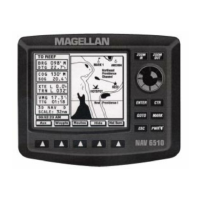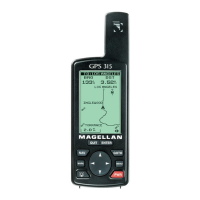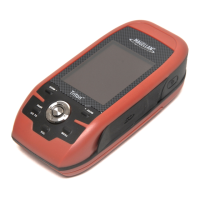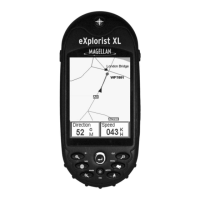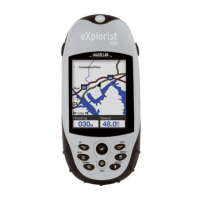THE GLOBAL POSITIONING SYSTEM
The receiver then assesses the transmission time and signal quality
from each satellite, and multiplies the difference in the transmission
time by the speed of light (186,000 miles per second) to arrive at an
estimate of the satellite's distance from the receiver (range). Next, the
unit calculates (by triangulation) and displays the position fix.
Although accuracy varies slightly with satellite constellation geometry,
a position fix accuracy of 25 meters or better is typical with C/A Code
receivers.
Interference
GPS uses a high frequency radio signal (1575.42 MHz) that operates
in a wave environment where there is little interfering radiation. Also,
GPS uses spread spectrum technology to protect its navigation sig-
nals. The GPS signal is therefore extremely resistant to conditions that
disturb other electronic navigation systems. In general, weather
conditions, on-board electronics, passing ships, on-shore electronic
installations, on-board engine ignition, and portable radio receivers do
not affect the GPS signal.
Monitoring and Controlling GPS
GPS is operated by the US Air Force from a master control station in
Colorado, USA. The facility is equipped for satellite monitoring, telem-
etry, tracking, command and control, data uploading, and navigation
message generation.
1-3

